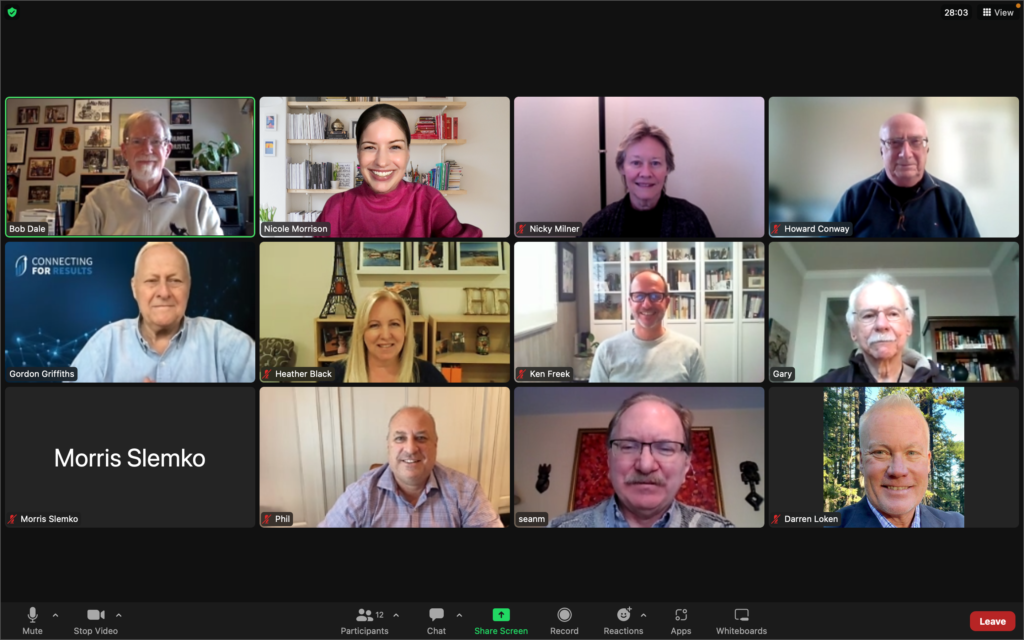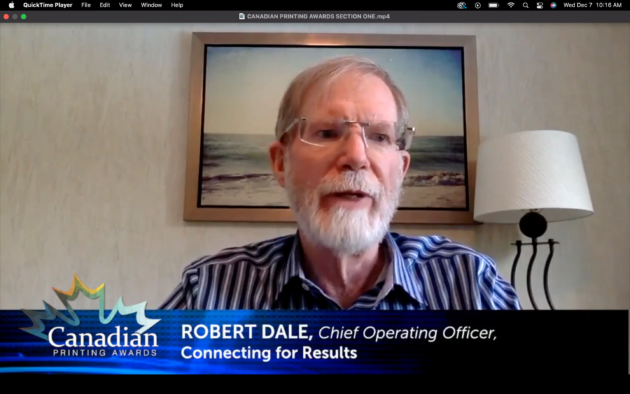
Features
Business
Tips to stay in the game long term
A lean and team-centric approach allowed Connecting for Results to flourish during the pandemic
May 15, 2023 By Nithya Caleb
 The Connecting for Results team. Photos © Connecting for Results
The Connecting for Results team. Photos © Connecting for Results The economic climate is chilly. Many companies are wondering how to move forward. It would be helpful to glean lessons from companies that began during the start of the pandemic when the world’s economy came to a standstill. One such firm is Connecting for Results (CFR).
Established in November 2019, Connecting for Results (CFR) is a strategic consulting organization specializing in the printing industry. It’s a fully remote, lean business with offices in Victoria, Toronto, and St. John’s in Canada, and Seattle and New York in the U.S. CFR’s 12 consultants have decades of experience in all aspects of graphic communications. Connecting for Results aims to attract people to the industry, create awareness of the benefits of print, and support diversity across the industry. To do so, they work with the Toronto Metropolitan University’s (TMU) Graphic Communications Management program, especially mentoring the students, the Eva’s Print Shop, a non-profit training at-risk young adults for industry jobs, and the Canadian Print Scholarships.
This fall, CFR will celebrate its fourth anniversary. I asked its CEO Gordon Griffiths and COO Bob Dale to share tips on how to stay resilient.

Gordon Griffiths giving his acceptance speech for winning a 2021 Canadian Printing Award in the Lifetime
Achievement category.
How did you manage to not only run a business through the pandemic, but also expand it in such a short timeframe?
GG: Having the best people and a variety of solid offerings are the key reasons for growth. With all the recent changes in the industry, I’ve been looking for the people with the best solutions to join our team. I cannot tell you how often clients have checked out our website and said, “Wow, you have Nicky Milner (and others) on your team?” The biggest impact on our growth was expanding to the United States, but we did that after building a solid base first.
Were you concerned about launching a business during the pandemic?
GG: We launched five months before the pandemic was official and it was only going to be Bob and myself. We have different skill sets and really complement each other. I can quickly see where we can help, and Bob, being a trained consultant, examines the facts before planning and executing the fix. During the beginning of the pandemic, Heather Black was the first person to join us. She’s responsible for recruitment services. We’re now a 12-member team.
What steps did you take to insulate CFR from the pandemic?
BD: We controlled investment. We delayed leasing office space, and then shifted from a full-time office to fractional space and facilities. Since M+A activity reduced internationally, we changed our marketing messages and sales and business activity to focus on our other service offerings like strategic consulting and recruitment. During the pandemic some markets, such as packaged goods production, were booming so we focused on them.
What were some of the challenges and how did you overcome them?
BD: When business travel was cancelled, we moved to virtual meetings and used digital tools like DocuSign. We established a peer group of senior executives from key print companies across Canada to identify common issues. CFR began to share best practices from an impartial perspective to help other companies in the industry.
How did you manage to keep the CFR team motivated throughout the pandemic?
GG: We are a very seasoned group, so motivating people was not the issue. The challenge was more in finding opportunities. During the pandemic, companies were holding on and consulting expenses were not top-of-mind, although a need. We don’t know to what degree COVID slowed our growth and never will. Whenever called on, our team gave their best and they put in the same effort as if they owned the company.
What factors contributed to CFR successfully navigating a pandemic?
BD: Since I had experience with remote work, I was able to put in place tools for team collaboration, planning and activity tracking, and communications. We took a team approach to our projects. Everyone was focused on communications for customer benefit and mutual success.
What advice did you give yourself about starting a new company when businesses were struggling to stay afloat?
GG: Consulting is far from an instant return on effort, but I can tell you, any start-up takes time and energy. You must have the ability to get up for the next opportunity after you have been knocked down. Great things take time. Also, tomorrow depends on how well you are doing today. We were smart and lucky to stay lean. We marketed ourselves at the speed of cash, and we are still marketing. What has paid off is deciding from the beginning that we would always provide more than we promised, and then some.
What were some of the lessons learned about operating a business during a pandemic?
GG: Despite expertise, consulting is not for everyone. However, we’ve ended up with an excellent team. COVID was very challenging, but we learned that you could cover a lot of ground with products like Zoom. Bob and I were going to make a second trip to Montreal to meet a client, but we couldn’t due to company protocols. Thanks to virtual meetings, we covered a week of activity in a day (less travel, hotels, etc.), and it’s still helping us to go strong today.
What are your plans for CFR?
GG: We have a good platform. Now we need to grow sales and improve each offering. I like to think we are like a high-end restaurant that is perfecting their specialty. Our tagline is “Knowledge + Experience = Results”, so we better be up to date. One of our offerings is to help companies with their succession plans, and believe me, we are thinking about ours after only three years.
An edited version of this article originally appeared in the March/April 2023 issue of PrintAction.
Print this page
